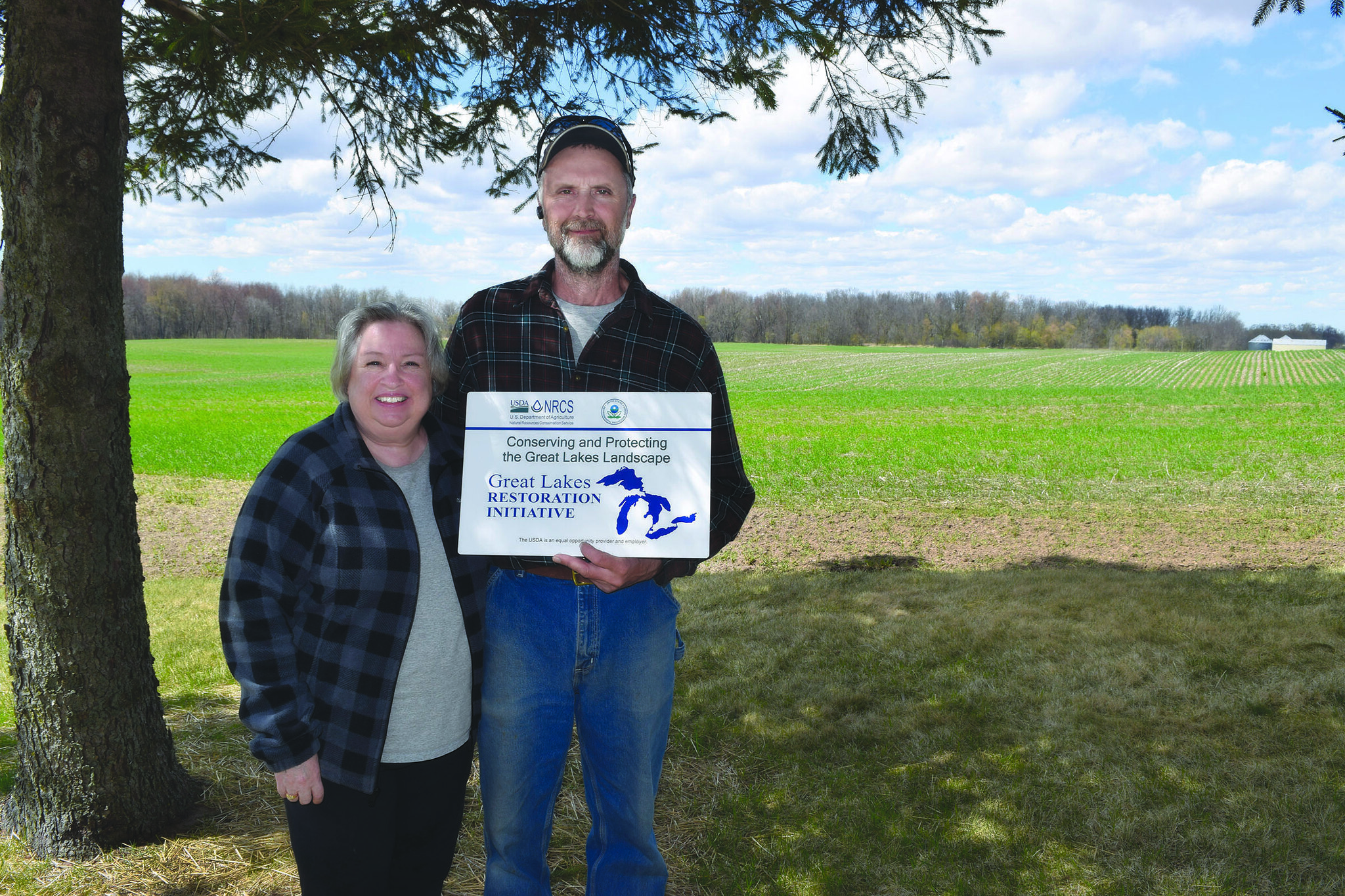
Some people are born to farm. Others grow to love it. Greg Nettekoven was born into a farm family, and he and his wife, Karon, have grown to love farming.
Greg is a second-generation farmer, and when he took the reins of the family farm in 1988, he changed the livestock operation into a vegetable farm – growing peas, sweet corn and beans.
Greg and Karon are passionate about what they do, and they take care of the land, making sure the operation stays productive while also conserving natural resources. To do this, they use a suite of conservation practices, which improve soil health on the farm and water quality downstream. This conservation work is especially important because their farm sits in the Fox River watershed, which ultimately flows into Lake Michigan.
Greg was an early adopter of conservation practices. He remembers a time when plowing led to washing, gullies, and erosion in his fields. Driving his tractor through fields with a cloud of dust around him, watching his top soil blow away, had an impact.
“We were one of the first ones in the area to get a soil saver chisel plow to help reduce tillage and start utilizing conservation practices actively,” he said.
This interest led him to USDA’s Natural Resources Conservation Service (NRCS), where he worked with his local conservationists to choose the best practices for his land. Through the Conservation Stewardship Program (CSP), Greg and Karon plant cover crops on their farm, which hold soil in place when cash crops are not growing.
Additionally, CSP provided them with technical and financial assistance to begin using slow-release nitrogen sources and drift reduction strategies, which ensure nutrients and pesticides are carefully placed to prevent waste and possible runoff into waterways. Through CSP, they recycle farm lubricants and used oil filters, too.
“Many farmers think about implementing conservation practices but need help with resources and advice, and that’s where NRCS comes in,” Greg said. “CSP is a great planning tool to help farmers think through applying conservation enhancements on the ground. They have great people with expertise on staff to direct questions and needs in the right place, examples of what has worked well before, and having a local service center connection in almost every Wisconsin county is priceless.”
Greg and Karon have taken their program successes one step further to help share information and resources with the public and other landowners. Their farm serves as a demonstration farm for the Great Lakes Restoration Initiative, a collaborative effort with 11 federal agencies including NRCS. Through GLRI, they show other farmers how leading-edge conservation practices can reduce runoff of phosphorous and provide other benefits to the farming operation.
For example, Greg is assisting NRCS in considering the use of urea and gypsum, which are soil amendments that help prevent phosphorous runoff.
“Greg is a progressive farmer and is an excellent partner to collaborate with to promote conservation on the land,” said Lynn Szulczewski, NRCS district conservationist in Appleton, Wisconsin. “He sets an example for others, applying conservation for the good of his farm, and making his farm a model with productivity and sustainability being the goals.”
For more on technical and financial assistance available through conservation programs, visit nrcs.usda.gov/GetStarted or a local USDA service center.



